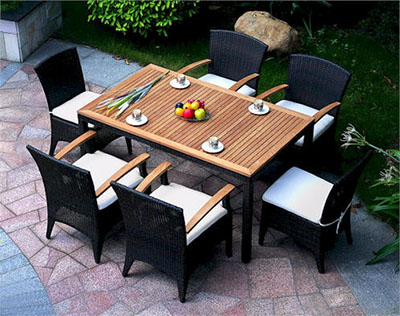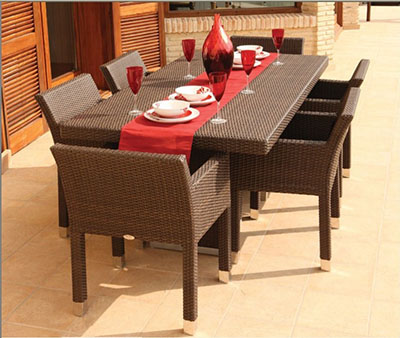Specification of Electroplating Process - Chrome Plating Process (II)
Many current chrome plating quality problems stem from poor control of the current, uneven distribution of current values, high drum ends, and low center, resulting in poor local bond strength and low chromium layer hardness and instability. Therefore, the current difference must be controlled. Because the size of the current difference between the two ends of the drum is a comprehensive reflection of the conductivity of the plate cylinder in the electroplating process, whether the conductive part is clean and whether the contact is good, is manifested in the magnitude of the current difference. Current difference has a great influence on the overall quality of the chromium layer, such as left and right uniformity, local bonding force, wear resistance and corrosion resistance, so it should be used as one of the main parameters for controlling the chromium plating quality. Although some operators have already had a certain understanding of conductivity, they still lack understanding of the relationship between the current difference at the two ends of the roller and the conductivity. Therefore, management in this area must be strengthened.
1. The conductive shaft should be in good contact with the carbon brush and roller. Surface contact should be achieved as far as possible. Otherwise, it is easy to produce unstable or partial passivation of the anode when the AC power of the rectifier becomes DC.
2. Keep the conductive parts clean and tidy, and always do cleaning.
3. The current density is controlled at 60A/dm2 and the voltage is controlled at 10±2V.
4. The mounting card should be sturdy and the conductive performance must be better.
5. Power transmission method: Use the impulse current transmission method. After the plate cylinder is inserted into the groove, it can be rotated for 1-2 minutes under the condition of no current, and then the high current can be quickly sent to the normal current. Note: The preheating before chrome plating must be taken seriously. If the preheating is not enough, the hot plating of the cold roll is easy to burst and the chrome removal occurs during printing.
(5) Strengthening chromium fluid management
It is an important link to obtain a compact chromium plating layer and improve the quality of the chromium layer. Therefore, the first thing to do is to make the various chemical components of the chromium solution pure and accurate.
1. The composition of the chromium plating solution
The basic components of the chrome plating solution are chromic anhydride and sulfuric acid. The chromic anhydride concentration can be divided into low, medium and high concentrations. The gravure chrome plating uses medium-concentration chrome plating solution, ie, the chromic anhydride concentration is 180 to 250 g/L. liquid. The plating solution with a chromic anhydride content of 250 g/L and a sulfate content of 2.5 g/L is called a standard chrome plating solution and is mostly used for hard chrome plating. Most of the plating company's chromium plating fluid composition is as follows:
(1) Chromium anhydride (CrO3) in an amount of 190 to 250 g/L.
(2) Sulfuric acid (H2SO4), content 1.9 to 2.5 g/L.
The ratio of chromic anhydride to sulfuric acid is: CrO3:H2SO4=100:1. The actual production conditions are different and the ratio will fluctuate at 100:(0.8-1.2).
2. Preparation of chromium plating solution
(1) Put the calculated amount of chromic anhydride into the tank, add two-thirds of the total volume of deionized water, heat to 50-60°C, stir the solution while heating, and then dilute to the total volume.
Since chromic anhydride for industrial use contains about 0.4% of sulfate, it should be sampled and analyzed, and then chemically pure sulfuric acid should be added to the process specification to achieve uniform mixing.
(2) The cathode reaction during chrome plating is as follows:
2H++2e→H2↑
Cr2O7-2 +8H++6e→Cr2O3+4H2O
(3) The raw materials such as chromic anhydride used in the preparation of the chromium plating solution must be pure, and each batch of material must be stable. Some companies have problems due to impure and unstable raw materials and it is difficult to find out why. Some companies choose chromic anhydride in Russia for high purity; some companies use chromic anhydride produced in Xinjiang and have good quality.
Chromium anhydride contains different amounts of sulfuric acid, which will make the ratio of sulfuric acid out of use, should master its laws.
3. Production considerations
(1) Observe the influence of chromic anhydride concentration The chromic anhydride concentration of the bath is generally in the range of 190-250 g/L. As the concentration of chromic anhydride increases, the conductivity of the bath increases, the covering ability also increases, and the cathode current efficiency increases. reduce. After adding certain additives, the concentration effect drops to a secondary position.
Usually the bath concentration can be measured by the specific gravity method. The relationship between the content of chromic anhydride and Baume degree is shown in Table 3.
(2) Note the effect of sulfuric acid concentration In the chrome plating process, sulfuric acid acts as a catalyst and dissolves the basic chromate film so that chromium can be precipitated smoothly. The concentration of sulfuric acid has a great influence on the quality of the chromium layer. The important point is the ratio of chromic anhydride and sulfuric acid, rather than the absolute content of sulfuric acid. When Cro3/SO42-=100, the current efficiency is the highest; when the Cro3/SO42-=95 (that is, the H2SO4 content is slightly higher), the chromium layer has a good finish and compactness, but the current efficiency and coverage are reduced, and both sides of the plate cylinder will be White; When Cro3/SO42->100 (ie, H2SO4 is slightly less), the coverage is better, but the chromium layer finish is reduced, and the phenomenon of hair growth and roughness occurs.
The effect of sulfuric acid on the cathode reaction is shown in Table 4.
If the content of sulfuric acid in the bath is too high, excess sulfuric acid can be precipitated with barium carbonate (BaCO3). The reaction is as follows:
H2SO4 + BaCO3 → BaCO4↓ + CO2↑ + H2O
2 grams of BaCO3 can precipitate 1 gram of H2SO4.
(3) Note the influence of trivalent chromium In addition to chromium and sulfuric acid, chromium plating solution should also contain a certain amount of trivalent chromium.
The bath must first be energized to produce a certain amount of trivalent chromium. The general plate-making company uses a carbon brush for the cathode, a lead-antimony alloy strip for the anode, and a titanium-platinum alloy for some anodes. The chromium layer has a good bonding force. In production, the area ratio of anode to cathode is controlled at 2:1 or 3:2, which can maintain the stability of trivalent chromium. Trivalent chromium is low in content, and it is electrolyzed by a large anode and a small anode. When the content of trivalent chromium is high, the area of ​​the anode should be increased, and the cathode area should be reduced for electrolysis. At a temperature of 50-60° C., a current with a current density of 5 to 10 A/dm 2 is applied for 2 to 4 hours until the trivalent chromium reaches the process requirements. In medium-concentration plating baths, some companies have standardized the trivalent chromium content to 1 to 5 g/L, and some to 2 to 5 g/L.
Practice shows that low trivalent chromium content, chromium deposition rate is slow, coating is soft, poor coverage; trivalent chromium content is high, the coating is rough, light brightness is poor, and the brightness current density range becomes smaller. When the trivalent chromium content is too high, use a thin iron rod as the cathode, so that the anode area is about 10 to 30 times the cathode area, and the anode current density is 1.5 to 2 A/dm2 until the trivalent chromium content is reduced to the specified range.
(4) Two methods for producing trivalent chromium 1 Electrolytic treatment method: When the temperature is 50 to 60°C, use a small current (7 to 10A/dm2) to load a platen roller and plate it for 30 hours to produce trivalent chromium. ion.
2 chemical treatment method: Some companies are in the temperature of 50 ~ 60 °C, in the main tank of 1000L add the appropriate amount of formaldehyde (analysis grade, 3000g), circulation for half an hour; some companies are in the main tank 1000L add appropriate amount Hydrogen peroxide (1000 to 1500 g).
(to be continued)
Our Rectangle Patio Dining Set has a relaxed, southern attitude, intricately handwoven in UV resistant resin wicker. You'll enjoy alfresco meals more as you unwind in thickly cushioned dining chairs. The smoothly woven rectangular patio dining table comfortably hosts up to six guests.You can choose different size and color to decorate your dining and garden.
-Handwoven premium resin wicker
-UV-protected, antimicrobial
-Rust-resistant powdercoated frames
-Cushions included
-100% waterproof polyester fabrics
-All-weather cushions have a high-resiliency foam core wrapped in plush polyester
-Table-top with tempered glass
-Assembly required on table
-polyethylene rattan: it's non-toxic and safe for the environment. It's also antimicrobial, a quality that prohibits the growth of fungus and mildew. The wicker won't splinter or rot in extreme temperatures (-94°F to 176°F), making our furniture an excellent choice for almost any climate.


If you have any questions, please contact with us directly. Rectangle patio dining set are produced
by Golden Eagle Outdoor Furniture With High Quality and Good Appearance. Welcome you can visit our Factory. For any inquiry,Please send mail directly to us.
Welcome your inquiry for further discussion.
Rectangle Patio Dining Set,Rattan Rectangle Dining Set,Wicker Rectangle Dining Set,Outdoor Rectangle Dining Set
Golden Eagle Outdoor Furniture Co., LTD. , https://www.geleisurefurnitures.com